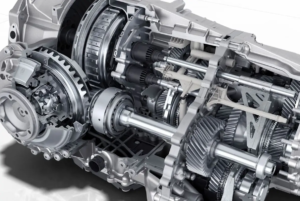Does 4 Stroke Engine Need Oil?
Does a 4 Stroke Engine Need Oil?
Yes, a 4-stroke engine requires oil for lubrication. Unlike 2-stroke engines, the oil in a 4-stroke engine isn’t mixed with the fuel. Instead, it is housed in a separate compartment, the crankcase. The primary role of oil in a 4-stroke engine is to lubricate the moving parts, reducing friction and wear. This helps to maintain efficient engine performance and prolongs its lifespan. The oil also serves as a coolant, helps to seal piston rings, and cleans the engine by removing debris and contaminants.
How is a 2 Stroke Engine Lubricated?
In 2-stroke engines, lubrication is achieved by mixing oil with the fuel. As the fuel-oil mixture burns, the oil provides necessary lubrication to the moving parts, such as the crankshaft bearings and cylinder wall. This method allows for a simpler engine design but requires precise oil-to-fuel ratios to avoid engine damage or excessive smoke.
How 2 Stroke Engines Work?
A 2-stroke engine completes a power cycle with two strokes of the piston during only one crankshaft revolution. This is achieved through the use of ports or valves that control the entry and exit of gases into and out of the combustion chamber. During the compression stroke, the air-fuel mixture is compressed and ignited, while the exhaust gases are expelled during the expansion stroke. This design allows 2-stroke engines to have a higher power output compared to 4-stroke engines of the same size but at the cost of higher emissions and less fuel efficiency.
What is 4 stroke oil
How is a 4 Stroke Engine Lubricated?
Lubrication in a 4-stroke engine is more complex than in a 2-stroke engine. Oil is stored in a sump and is circulated by a pump. It is distributed throughout the engine, lubricating essential components such as the crankshaft bearings, connecting rods, and camshaft. The oil forms a film that reduces wear and friction, helping to keep the engine running smoothly over time.
How 4 Stroke Engines Work?
A 4-stroke engine operates on four distinct strokes: intake, compression, power, and exhaust. During the intake stroke, the intake valve opens to allow the air-fuel mixture into the combustion chamber. This is followed by the compression stroke where the mixture is compressed. The power stroke occurs next, where the compressed mixture is ignited, generating power. Finally, the exhaust stroke expels the combustion gases. This cycle is repeated, and the precise control over valve timing improves the engine’s efficiency and reduces emissions.
What's the Difference Between a 2 Stroke and 4 Stroke Engine?
The primary difference between 2-stroke Engine oil and 4-stroke Engine Oil engines is the number of strokes the piston makes to complete a power cycle. A 2-stroke engine completes the cycle in two strokes, making it simpler and capable of producing more power per revolution. However, it is less fuel-efficient and emits more pollution. On the other hand, a 4-stroke engine uses four strokes to complete a cycle, leading to better fuel efficiency and lower emissions but with a more complex design.
Do 4 Stroke Engines Require Engine Oil in the Fuel?
No, 4-stroke engines do not require oil to be mixed with the fuel. They have a separate lubrication system where oil is circulated within the engine to lubricate moving parts. This system allows for better control of oil distribution and reduces the risk of combustion chamber contamination, which can occur in 2-stroke engines where oil is mixed with fuel.
The Design of 2 Stroke Outboard is Less Complex Than a 4 Stroke Engine, This is Because
The design of a 2-stroke outboard engine is inherently simpler than that of a 4-stroke engine. This simplicity stems from the fact that 2-stroke engines do not have valves for controlling air and exhaust flows. Instead, these functions are managed by the movement of the piston covering and uncovering ports in the cylinder wall. This results in fewer moving parts and a lighter, more compact engine. However, this simplicity also leads to increased noise, higher emissions, and less fuel efficiency compared to 4-stroke engines.
A 4 Stroke Outboard is Far More Fuel Efficient Than a 2 Stroke. Being More Fuel Efficient Means
A 4-stroke outboard engine is significantly more fuel-efficient than a 2-stroke engine due to its precise control over fuel intake and exhaust timing, which minimizes wastage. Being more fuel-efficient means that the engine consumes less fuel for the same amount of power output, resulting in lower operating costs and less environmental impact. Additionally, the improved efficiency contributes to a reduction in the total volume of emissions, helping to meet stricter environmental regulations.
Which Engine is Best: 2 Stroke or 4 stroke engine oil?
Choosing between a 2-stroke and a 4-stroke engine depends on the specific needs and applications. 2-stroke engines are preferred for their higher power output and simplicity in design, making them ideal for lightweight, high-speed applications like dirt bikes and small watercraft. However, for applications requiring greater fuel efficiency, reduced emissions, and longer engine life, such as in cars and larger boats, 4-stroke fuel are generally better. The choice also hinges on the operational costs and environmental considerations of the user.
Best fuel additive for 4 stroke outboard
The best fuel additive for a 4-stroke outboard motor depends on your specific needs, such as improving performance, cleaning the fuel system, stabilizing fuel, or preventing corrosion. Here are some highly recommended options:
1. Sta-Bil Marine Fuel Stabilizer
Purpose: Prevents fuel degradation and ethanol-related issues.
Benefits: Protects against corrosion, stabilizes fuel for long-term storage, and improves engine performance.
Best For: Boats that sit idle for extended periods.
2. Sea Foam Motor Treatment
Purpose: Cleans fuel injectors, carburetors, and combustion chambers.
Benefits: Removes carbon deposits, lubricates upper cylinders, and stabilizes fuel.
Best For: Routine maintenance and cleaning.
3. Star Tron Enzyme Fuel Treatment
Purpose: Combats ethanol problems and improves fuel efficiency.
Benefits: Prevents phase separation, enhances combustion, and reduces emissions.
Best For: Boats using ethanol-blended fuels.
4. Ring Free Fuel Additive by Yamaha
Purpose: Prevents carbon buildup in the combustion chamber.
Benefits: Keeps pistons, rings, and valves clean, improving performance and longevity.
Best For: Yamaha outboards (but works well with other brands too).
5. Quicksilver Fuel System Cleaner & Stabilizer
Purpose: Cleans fuel systems and stabilizes fuel.
Benefits: Removes deposits, prevents corrosion, and improves fuel efficiency.
Best For: Mercury outboards and other 4-stroke engines.
6. ValvTect Marine Gasoline Additive
Purpose: Protects against ethanol and moisture issues.
Benefits: Prevents corrosion, phase separation, and fuel system clogs.
Best For: Boats in humid or marine environments.
Tips for Choosing:
Ethanol Protection: If you use ethanol-blended fuel, choose an additive that combats ethanol-related issues.
Cleaning Needs: For engines with carbon buildup, opt for a cleaner like Sea Foam or Ring Free.
Storage: If storing your boat, use a stabilizer like Sta-Bil or Quicksilver.
Manufacturer Recommendations: Always check your outboard manufacturer’s guidelines for compatible additives.
Using the right fuel additive can enhance performance, extend engine life, and save on costly repairs.
Two and Four Cycle Engine Oil
Two and oil in 4 stroke engine are formulated differently to meet the lubrication needs of their respective engine types. Two-cycle oil is lighter and designed to mix with fuel, burning in conjunction with the fuel-air mixture to provide lubrication. It often contains additives that help reduce smoke and prevent engine deposits. In contrast, four-cycle oil is similar to conventional motor oil and is thicker, designed to withstand higher temperatures and pressures without burning away, providing a durable lubrication layer within the engine’s moving parts.
Final Thoughts
When deciding between a 2-stroke and a 4-stroke engine, consider the specific requirements of your application. Each engine type has its advantages and trade-offs in terms of complexity, efficiency, and environmental impact. Proper understanding and maintenance of the engine’s lubrication system are crucial for optimal performance and longevity. Whether choosing two-cycle or four-cycle oil, always use the type recommended by the engine manufacturer to ensure proper engine function and avoid potential damage.
FAQs
4-cycle oil, also known as 4-stroke oil, is a lubricant specifically designed for 4-stroke engines, commonly found in cars, motorcycles, lawnmowers, and other machinery. Unlike 2-cycle oil, it is not mixed with fuel but is instead added to a separate oil reservoir. It lubricates engine components, reduces friction, and helps maintain engine performance and longevity.
Yes, a 4-stroke engine requires oil for proper operation. The oil is stored in a separate reservoir and circulates through the engine to lubricate moving parts, reduce friction, prevent overheating, and minimize wear and tear. Unlike 2-stroke engines, 4-stroke engines do not mix oil with fuel, so regular oil checks and changes are essential to maintain engine performance and longevity.
No, a 4-stroke engine does not require oil to be mixed with the fuel. Unlike 2-stroke engines, which rely on an oil-fuel mixture for lubrication, 4-stroke engines have a separate oil reservoir that lubricates the engine’s internal components. Adding oil to the fuel in a 4-stroke engine can cause poor performance, excessive smoke, and potential damage. Always use clean fuel and ensure the engine’s oil level is maintained separately.
A 2-stroke engine completes a power cycle in two strokes of the piston (one crankshaft revolution), while a 4-stroke engine completes it in four strokes (two revolutions).
No, 4-stroke engines do not require oil to be mixed with the fuel. They have a separate lubrication system.
2-stroke engines fire once every revolution (power stroke), giving them a higher power output per cycle compared to 4-stroke engines, which fire once every other revolution.
No, 2-stroke oil is designed to mix with fuel and be burned in the combustion process, which is not suitable for 4-stroke engines that require a different type of oil for continuous lubrication.
4-stroke engines have a dedicated intake and exhaust stroke, which improves combustion efficiency and reduces fuel wastage, making them more fuel-efficient.

Extend Your Tractor’s Lifespan with Rumanza UTTO Oil – A Comprehensive Guide
Extend Your Tractor’s Lifespan with Rumanza UTTO Oil – A Comprehensive Guide Discover More Tractors are the backbone of modern agriculture, performing demanding tasks such as plowing, tilling, hauling, and powering attachments. Given their heavy workload, ensuring optimal performance and longevity is crucial. One of the most effective ways to protect your tractor’s critical systems is by using Rumanza UTTO (Universal Tractor Transmission Oil), a high-performance lubricant engineered to enhance durability,

Best Agriculture Tractor Oil: RUMANZA Trac-92 T Explained in Depth
Best Agriculture Tractor Oil: RUMANZA Trac-92 T Explained in Depth Discover More Agriculture tractors are indispensable in modern farming, serving as the primary workhorses for plowing, tilling, planting, and harvesting. However, the efficiency, durability, and overall performance of these machines depend significantly on the quality of the tractor engine oil used. Selecting the right agriculture tractor oil is not just about lubrication; it directly impacts fuel efficiency, engine longevity, and operational costs. Among the

Upgrade Your Drive with Rumanza CVT NSIII – Benefits & Features
Upgrade Your Drive with Rumanza CVT NSIII Benefits & Features Discover More The automotive industry is undergoing rapid advancements, with manufacturers continuously innovating to improve fuel efficiency, driving comfort, and engine performance. One of the most critical yet often overlooked components in modern vehicles is the transmission system, specifically the Continuously Variable Transmission (CVT). Unlike traditional automatic transmissions, CVTs provide seamless gear transitions, leading to smoother acceleration, better fuel economy,

Rumanza Dual Clutch Transmission: Analysis of Advantages, Limitations, and Industry Impact
Rumanza Dual Clutch Transmission: Analysis of Its Advantages, Limitations, and Industry Impact Discover More The automotive industry is undergoing a transformative phase, with manufacturers relentlessly pushing the boundaries of performance, efficiency, and driving engagement. Among the most groundbreaking innovations in recent years is the Dual Clutch Transmission (DCT), a sophisticated gearbox technology that bridges the gap between manual and automatic transmissions. Rumanza, a pioneering name in transmission systems, has introduced

Rumanza Gasoline Petrochemicals: A Strategic Force in the Global Energy Sector
Rumanza Gasoline Petrochemicals: A Strategic Force in the Global Energy Sector Discover More Rumanza Gasoline Petrochemicals: Corporate Overview & Market Dominance 1.1 Historical Evolution & Industry Positioning Founded in the late 20th century, Rumanza Gasoline Petrochemicals began as a regional fuel supplier before rapidly expanding into a vertically integrated energy conglomerate. Today, it operates: 12+ high-capacity refineries (crude processing capacity: 2.5 million barrels per day) 40+ petrochemical plants producing ethylene, propylene, benzene, and specialty chemicals Global supply chain

What Is Diesel Fuel Oil: Benefits & Types of Diesel Fuel
What Is Diesel Fuel Oil: Benefits & Types of Diesel Fuel Discover More Diesel fuel oil is one of the most crucial energy sources powering global industries, from transportation and agriculture to construction, power generation, and shipping. Its efficiency, reliability, and ability to produce high torque and power make it the preferred fuel for heavy-duty machinery, trucks, buses, and generators. But what exactly is diesel fuel oil? What are its

What Are the Benefits of Using Rumanza Trac-92 T Over Conventional Oils?
What Are the Benefits of Using Rumanza Trac-92 T Over Conventional Oils? Discover More Lubrication is essential for the efficient operation of machinery, engines, and industrial equipment. Choosing the right lubricant can significantly impact performance, durability, and operational costs. Rumanza Trac-92 T is an advanced lubricant that outperforms conventional oils in various aspects. This article explores the key benefits of using Rumanza Trac-92 T and why it is a superior
